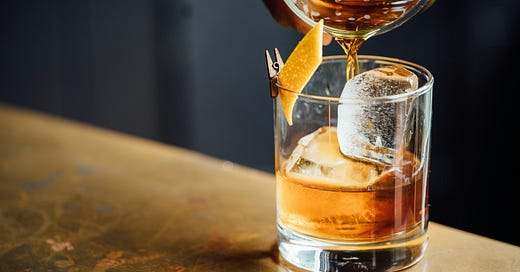What Is Behind the Hangover in Alcoholic Beverage Stocks?
Why alcohol stocks are struggling and what is means for investors
After years of steady growth and strong brand power, the alcoholic beverage sector is now facing one of its toughest periods in recent memory. From shifting consumer habits to economic headwinds, many leading companies in beer, wine, and spirits are seeing declining sales, weaker margins, and falling stock prices. Once considered a defensive and reliable industry, alcohol stocks are suddenly under pressure.
But what is really driving this downturn? And could this period of weakness present an opportunity for long-term investors?
In this article, we will break down the key reasons behind the sector's struggles and explore whether there is value to be found amid the decline.
The current difficult situation
With drawdowns from their all-time highs (ATH) of up to 70%, the sector has significantly underperformed. While the PE ratio may appear relatively reasonable, this is largely due to a sharp decline in net profit margins.
The reasons of these declines
1. Declining consumer demand
A growing number of consumers, particularly younger demographics like Millennials and Gen Z, are reducing their alcohol consumption or opting for non-alcoholic alternatives. This shift is driven by health and wellness concerns, as well as lifestyle changes such as "Dry January".
Several studies proved that alcohol consumption has been on the down trend for almost 30 years now in major countries.
2. Saturation and too much competition
The market, particularly in segments like craft beer where barriers to entry are small, has seen an influx of small players over the past decade. However, with demand softening, many of these businesses are struggling to remain viable. This also reduces the market share of major players, therefore pressuring growth and margins.
3. Brand-specific issues
The Bud Light boycott in 2023 following a controversial marketing campaign has proved that brand reputation could hurt sales a lot. Reports indicate Bud Light lost 30% of its sales in 2023 and an additional 10% in 2024, with declines persisting into 2025 due to a lack of accountability and failure to regain consumer trust.
4. Post-COVID normalization
The sector enjoyed a boost during COVID lockdowns (with at-home drinking surging), but that demand has now normalized or even declined, especially for retail sales, while bars and restaurants haven't fully compensated.
A normalization phase create growth and more importantly margin reduction and markets tends to react violently to margin dynamics as I described in this article.
5. Weakness in key markets
Certain regions, including China and Europe, have experienced weaker demand driven by economic slowdowns. In Europe, sluggish growth and tighter budgets have dampened consumption. Meanwhile, in the US, high inflation has impacted mid-range products, while premium spirits have been less affected.
Rising costs for key elements like bottles, energy and transportation also pressured margins and reduced demand with price increases.
6. Regulation and trade war
Regulation and trade tensions have also contributed to the sector's difficulties. Increasingly stringent regulations on advertising, labeling, and sales in key markets have made it more challenging for companies to reach consumers effectively.
Additionally, trade wars and tariffs, particularly between major economies like the US and China, have disrupted supply chains, raised costs and prices, and limited access to foreign markets. For instance, China leveraged spirits as a bargaining chip in its trade dispute with Europe over electric vehicle tariffs.
Some reasons to hope
However, there are still reasons to be optimistic.
First, the global market is expected to continue growing. While 2030 market forecasts vary, with analysts predicting a compound annual growth rate (CAGR) between 2% and 7%, all studies indicate a positive long-term growth trend. Naturally, some regions will experience faster growth than others, with Latin America, Africa, and Asia emerging as key drivers.
In response to changing consumer preferences, many brands are adapting by offering more premium products and enhancing their experiential appeal. The value growth in high-end segments is outpacing the declines in volume. Additionally, new product innovations, such as flavored spirits and cannabis-infused beverages, are helping to expand the market potential.
Finally, despite recent volatility, the sector remains a consumer staple and may perform well during periods of economic turmoil, particularly after such significant drawdowns. A strong rebound from these lows could be on the horizon.
Let me know what you think of the sector in the comments!







I also think that the youth tends to focus less on alcoholic beverages. They are now occupied with other things. Apart from football, and a few big festivals, cafés and dance halls are visibly disappearing. (Except for more expensive drinks, such as Champagnes, big wines and Whiskies, in the long run.)
Great summary! I would have maybe separated a bit the issues between beer and spirits which are not completely overlapping in my view.
The destocking in spirits has been so brutal in the US! I am slowly building a position as I think when depletion start picking up we could see a strong restocking event. The main issue is the headline risks on those names is very strong at the moment between tariffs and RFK jr.